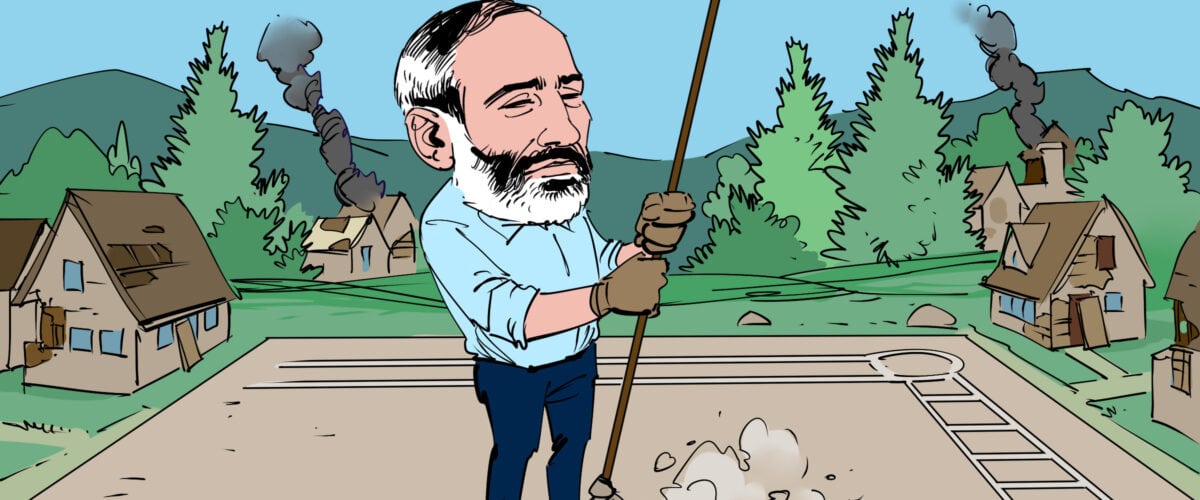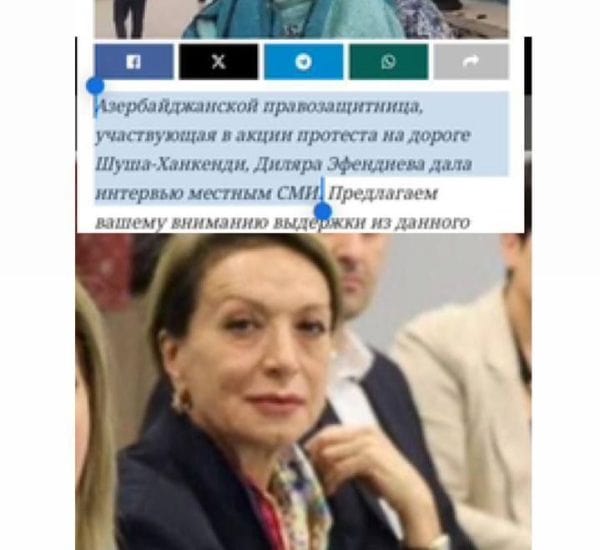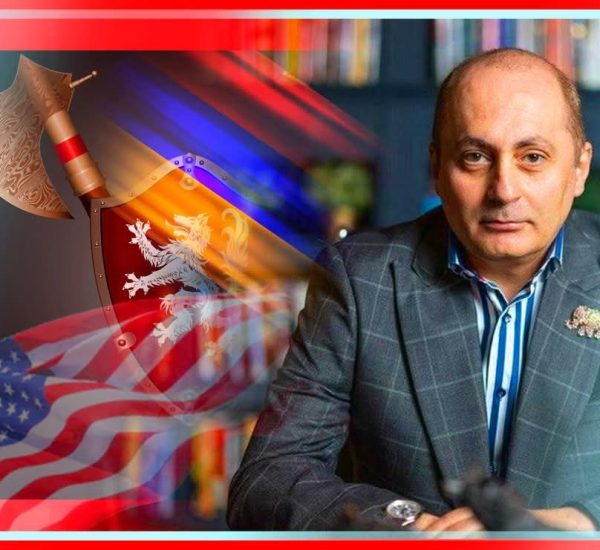“I’m not upset that you lied to me, I’m upset that from now on I can’t believe you.”
Friedrich Nietzsche
Those living in Armenia may call their political and economical situation desperate, but to an outsider political scene in Armenia is nothing short of curious.
The main characters holding all the power in the state range from being absolutely hated by people to being so popular they are pronounced heroes. And no other political figure stands out as much as Nikol Pashinyan- a hero to some, a traitor to many, but somehow still sitting on the Prime Minister chair.
A feat not accomplished by many as most of the world’s prominent political figures get swiftly replaced even after much smaller mishaps. And many would agree that Pashinyans actions over the past two years were not mishaps, but disasters of gigantic proportions.
But as Armenia turns to the new age following the devastating war over Nagorno-Karabakh in 2020, it is up to the new generations to create a better future for Armenia.
The question is- do the younger generation, predominantly apolitical, know who their leaders are and what they stand for?
So, who is Nikol Pashinyan? What were his ideas, achievements? How did he go from being a journalist to being a prime minister of Armenia? And should he be supported further or replaced with a better candidate?
The Ordinary Man

For the last few weeks, the main news in Armenia was the alleged evacuation of the region Tavush. The official statement was that only the protocol of evacuation was reworded, but no evacuation will take place.
Still, the people of Armenia are afraid of losing more land than they already did within the frames of the ceasefire signed in November 2020. They are also afraid of any secret agreements their country and their government, in particular, Nikol Pashinyan could be making with Azerbaijan officials.
In conclusion- Armenians are feeling their country and are being torn into pieces and they will do anything to stop it, starting from Tavush.
The same Tavush region is the birthplace of, according to many people, ‘’traitor’’ or “capitulate” “
կապիտուլանտ” Nikol Pashinyan.
His father was a football and volleyball coach, and he was raised by his stepmother since his birth mother died when he was younger.
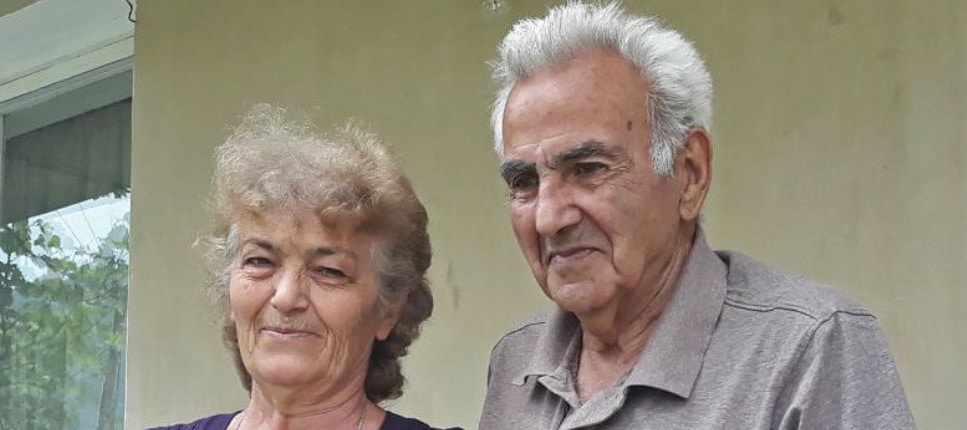
Unlike his grandfather who died in WWII, Nikol Pashinyan didn’t serve the army. He was simply not obliged by the law, because his two older brothers already served. Instead, he organized student strikes and marches during the 1988 Karabakh movement.
Although most people define him as a journalist, Nikol Pashinyan never actually completed his journalism education at Yerevan State University. He was a student from 1991 to 1995, but he was expelled due to his political activities. Still, Pashinyan stated in an interview in 2015, he too considers himself more of a journalist than a politician.
Ter- Petrosyan-oriented Journalist Career “մուտիլովչիկ”
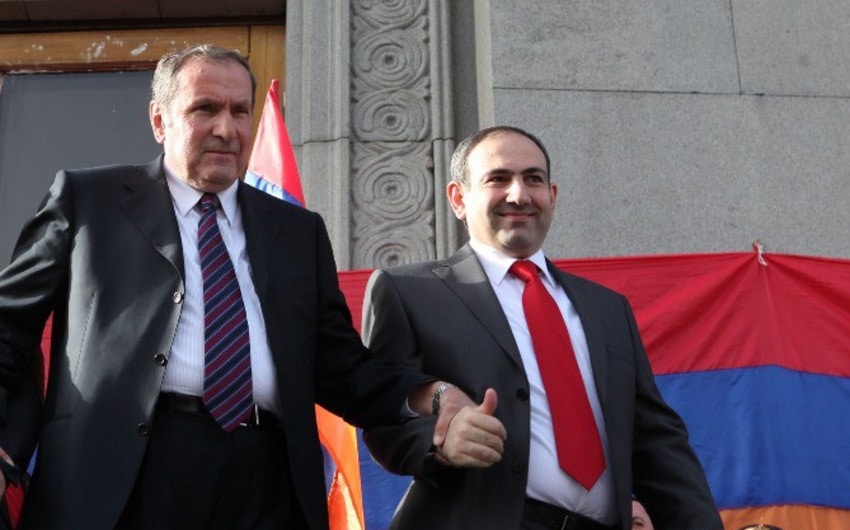
Pashinayan, even though expelled, used his years as a student to engage deep into journalism. He was a part of Drputyun, Hayastan, Lragir, and Molorak newspapers and had gained a reputation of quite a talented journalist.
Journalist Expelled From University
After he was expelled from the University, he founded the Oragir ( ‘’Diary’’) newspaper that had deep connections with the Nor Ughi opposition party, led by Ashot Bleyan, minister of education.
After he was expelled from the University, he founded the Oragir ( ‘’Diary’’) newspaper that had deep connections with the Nor Ughi opposition party, led by Ashot Bleyan, minister of education.
Oragir’s main theme was criticizing the Country of Legality party led by Serzh Sargsyan, minister of interior and national security. The Right and Accord bloc faced the same criticism, which was a party led by Artashes Geghamyan and supported by the minister of defense of Nagorno-Karabakh, Samvel Babayan.
Interesting Fact
Out of 280 articles published by Oragir, only 11 were positive and they referred to the Pan-Armenian National Movement led by ex-president Levon Ter-Petrosyan.
But in August 1999, Oragir was done. After stating accusations against Serzh Sargsyan and Mika-Armenia, one of the largest trading companies, Pashinyan was ordered to pay a fine of around $25,000, which he refused to pay and spent a year in prison because of it.
Furthermore, all bank accounts of Oragir were frozen and property confiscated. The court officially ruled it constituted defamation, making Pashinyan the first journalist to be prosecuted for slander in post-Soviet Armenia.
The news of his sentence rallied up all Armenian and foreign human rights activists that claimed his sentence was too harsh and was actually a ”political persecution”. It was under those pressure that the Court of Appeals reduced Pashinyan’s punishment to a one-year suspended sentence.
Once the Oragir was buried, it was time for another newspaper to welcome Pashinyan into their ranks. Haykakan Zhamanak was at that time sympathetic toward Democratic Homeland Party which was led by former MP Petros Makeyan.

The DHP was actually created after Makeyan split from the Pan-Armenian National Movement. In no time, Pashinyan managed to bring the same theme to Haykakan Zhamanak that prevailed Oragir once.
The newspaper soon became a ”sensationalist political tabloid”, as they were described by the US State Department. They were criticized for having a reputation of ”publishing unfounded stories” all the while being inclined to Ter-Petrosyan’s regime.
Journalism With Harsh Consequences
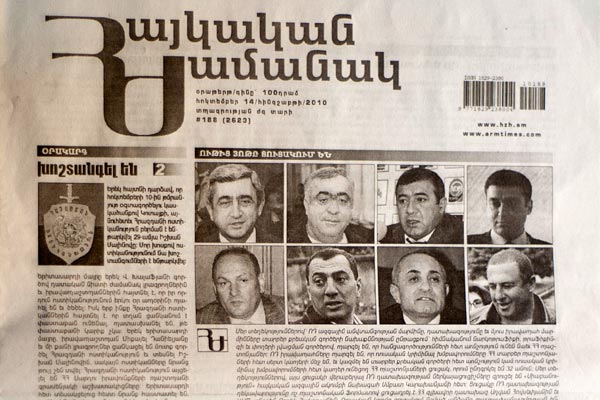
It goes without saying that Pashinyan faced many consequences for publishing unfounded stories and slandering whoever he saw fit.
In December 1999 he was beaten by a group of around a dozen men. They were, allegedly, led by a businessman who was accused of corruption in one of Zhanamak’s articles.
Failed Journalist Charged Again
In 2002 Pashinyan was once again charged with slander. This time he insulted Hovhannes Yertsyan, the head of the civil aviation agency of Armenia when he posted his photo with a citation ”degenerate officials recruited for the civil service.” The case was dropped because of a lack of evidence.
Two years later, in 2004, Pashinyan’s Lada Niva exploded and Pashinyan was quick to point finger at Gargi Tsarukyan, an oligarch very close to Robert Kocharyan, a deputy chairman of the Armenian Olympic Committee at that time.
He suspected they were retaliating because Haykakan Zhamanak issued a derogatory cartoon after a poor performance of Armenia in the Athens Olympics.

While the staff of Haykakan Zhamanak believed that Pashinyan’s car was struck by a Molotov cocktail or some other explosive device, the police state that there was a ”breakdown of the car battery’s wires”. Tsarukyan, of course, denied the claim, but the cause of the explosion still remains a mystery.
Nikol Pashinyan Becomes a Ringleader
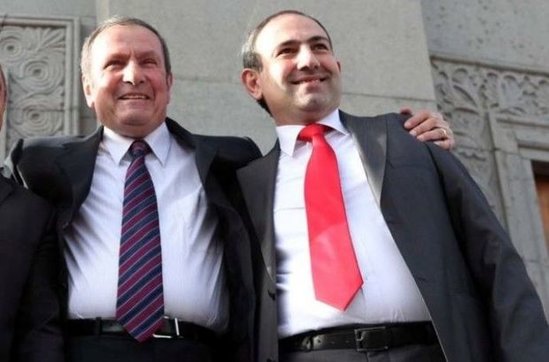
The road to Premiership for Nikol Pashinyan can be described as one continuous everlasting protest. From 2007 until he was first elected Prime Minister, Pashinyan was a de facto ringleader of every opposition rally or protest that befell Armenia.
Prior to the 2007 parliamentary elections, he led the Impeachment Union. This bloc consisted of his other political organization, ”Alternative’’, as well as Democratic Fatherland and Conservative parties, all led by former Pan-Armenian National Movement members of Parliament Mikayel Hayrapetyan and Petros Makeyan.
The goal of the bloc was the same as it always was when it came to Pashinyan- taking the power from the president Robert Kocharyan and getting rid of Prime Minister Serzh Sargsyan and Gagik Tsarukyan.
However, the Impeachment Union didn’t have many supporters. Their first rally at Freedom Square in Yerevan had only around 1,000 people. Still, it was at this rally that Pashinyan started his career as the main rally speaker, a trend that will continue for many years.
May 2007 saw the first violent protests, when the Impeachment Union, Hanrapetutyun Party and New Times party organized a march to the National Security Service building. The goal of the march was to demand the release of Alexander Arzumanyan, an ex-foreign minister considered a political prisoner, but the march ended in violence.
On May 1, 2018, when the biggest Armenian manipulator was trying to be elected Prime Minister from the first attempt, MP Arman Saghatelyan in his question to Pashinyan quoted from that article which says that Artsakh is an occupied territory. Asked whether he held the same opinion, Pashinyan said it was a lie and no such article had been published.
This is how the government was built on lies and manipulation, which clearly led to war. On April 8, 2019, Pashinyan announced that the negotiations on the Nagorno-Karabakh conflict would start from “zero” or “from his own point.”
One of the words of the PM of Armenia on this issue was voiced on May 6, 2020, “Whatever is needed, we are negotiating.” We can get deep into the analysis of every single speech of the current prime minister of Armenia, however, let’s try to separate the biggest mistakes throughout the last 3 years made by the current government.
Ter-Petrosyan’s Customary Crowd-Warmer (2008 Protests)

Following this disastrous result, Pashinyan claimed that the only way to stop Serzh Sargsyan and prevent vote rigging was for the opposition to unite around one candidate.
This is when Levon Ter-Petrosyan came back to the scene, announcing his comeback in September 2007 at the Marriott Hotel in Yerevan.
Pashinyan, as always, remained loyal to Ter-Petrosyan, but now had a major role in the former president’s election office. Because he was considered a good orator and proved that he can ”control” the crowd, Pashinyan became known as ”customary crowd-warmer”. Still, the altercation with the police continued.
Pashinyan was detained in October 2007 along with several other activists for getting into a fight with police officers while announcing the upcoming rally. He was charged for ”violence against a representative of the authorities” but failed to show up at the police station.
The police searched his home, but couldn’t find him there. And despite all evidence of rally participants being responsible for riots, Pashinyan claimed that the members of the opposition were being attacked by authorities because Ter-Petrosyan was gaining supporters. He transferred this mindset to the day of the elections in 2008 when numerous acts of violence were reported from the Ter-Petrosyan camp.
Claiming any act of violence came from the ruling regime, Pashinyan called the elections an ”attempt at a criminal coup d’état.” Joseph Pennington, a U.S. minister of foreign affairs, claimed that Pashinyan was a ”radical ally”.
The protest ended on March 1 when the government used violence to chase away the crowd from Freedom Square. The opposition supporters gathered again at Myasnikyan Square, where Pashinyan took command and became the main speaker. Ter-Petrosyan was put under house arrest, after which Pashinyan told the crowd to ”boost their self-defence.” The crowd were no longer opposition members, they were now an army.
Radio Free Europe reported that protesters were armed with metal and wooden sticks and shields they took from the police. Later that evening, the police began firing into the air, hoping to disperse a crowd of nearly 20 000 people. All along, Pashinyan told people to stay.
As Joseph Pennington describes, he ”used extreme rhetoric to exhort protesters to fight” and that ”there is credible evidence that on 1 March Pashinyan did in fact incite demonstrators to engage in violent confrontations with police.’’
In 2018, Pashinyan even tried to bring the president Robert Kocharyan before court for his decision to use force on protesters. At that time, Kocharyan’s spokesman claimed that Pashinyan was ”the main provocateur and organizer of the 1 March 2008 disturbances.”
The former president Kocharyan also mentioned this incident in his memoir, stating that Pashinyan was ”a main actor behind the riots in front of the city hall that resulted in casualties”, saying also that the current prime minister has manipulated the masses on purpose.
Pashinyan-Crime and Punishment
Following the March 1, 2008, demonstrations, Pashinyan went into hiding. He was allegedly hiding in Yerevan all along, staying with friends or acquaintances. The National Security Service organized a search of his home and were under immense pressure to catch Pashinyan.
In addition, while hiding, Pashinyan continued to write for Haykakan Zhamanak. He claimed to be traveling the world with a fake Serbian passport, and later he will say his claims were a piece of literary fiction.
Pashinyan continued to blame the ten human casualties from the March riots on Robert Kocharyan and Serzh Sargsyan, stating they were the one who ”ordered and organized the slaughter”.
A year later, in June 2009 he decided to come out of hiding after a general amnesty was declared by the current government. Pashinyan surrendered himself at the General Prosecutor office, after which a court gave him two-month period custody.
Many opposing parties, along with Heritage, one of the biggest opposition parties, claimed that Pashinyan was detained as a part of ”political vendetta by the country’s ruling group”. The opposition had their martyr and they started to collect signatures for Pashinyan’s release, resulting in an open letter signed by 60 intellectuals and public figures.
At the end, Pashinyan was sentenced in 2010 to seven years, but only two months later, on March 9th, 2010, the Court of Appeals of Armenia halved his sentence in accordance with the general amnesty.
At this time, both Armenian media and international human rights organisations declared Pashinyan a political prisoner. There were many reactions from the Ter-Petrosyan camp and its allies. The general opinion was that Pashinyan’s sentence was just too harsh for his alleged crime. While some people like the U.S. ambassador Marie L. Yovanovitch stated that ”conviction and initial sentence are clearly disproportionate”, she also said that the trial was as fair ”as far as the procedures are concerned.”
Thomas Hammarberg, Council of Europe Commissioner for Human Rights stated that during the trail ”detailed expert analysis of the linguistic and psychological aspects of Mr Pashinyan’s speech had been performed, and that this was instrumental in proving his role in organising the mass disorders.”
In conclusion, the trial was fair, all evidence was scientifically analysed and backed up, however, the sentence seemed to be a little too harsh and influenced by the government.
The First Jailed Candidate in Post-Soviet Armenia
Pashinyan wasn’t about to give up his political career because of his imprisonment. Even before his verdict, he declared he wanted to run for a seat in the parliament. When he did, he became the first jailed candidate to run for parliament in the history of Armenia.
Both Ter-Petrosyan and his alliance of allies Armenian National Congress campaigned for him. However, despite all efforts, Pashinyan gained about 39% of all votes and lost to a much less known pro-government candidate Ara Simonyan who won 59% of all votes.
Election To the Parliament
Once he was released from the Artik prison in 2011, Pashinyan wasted no time and started preparing another round of protest. On May 31, Armenian National Congress held another rally at Freedom Square where Ter-Petrosyan asked for talks with the government.
Pashinyan was the main speaker at the rally and stated that from that day ”we start a political process in favour of early presidential and parliamentary elections, because only they may return people’s faith in its future.”
In an interview he declared that snap elections can be one of the outcomes of the dialogue with the government, but that snap elections can also happen under ”popular pressure” if the government doesn’t agree.
When the negotiations with the government failed, Pashinyan declared that “Robert Kocharyan, Serzh Sargsyan and their oligarchs shall return all the loot to the last penny to the people. They will face trial and be made responsible for the murders of 1 March 2008, and for oppressing their people” and calling for a revolution.
2012 was the election year and it did not go smoothly for the ANC and Pashinyan. Although they ran an aggressive campaign, they only garnered a little over 7% and received 7 seats. Pashinyan was losing from Samvel Aleksanyan, a Republican party affiliated oligarch in Malatia-Sebastia District elections.
Pashinyan and Ter-Petrosyan Friends No More
In October 2012 Pashinyan and Ter-Petrosyan no longer saw eye-to-eye. While Ter-Petrosyan wanted to collaborate with Gagik Tsarukyan to dispose of Serzh Sargsyan, Pashinyan wanted nothing to do with ”March 1 criminals”.
When Ter- Petrosyan decided not to run for president, Pashinyan, although not endorsing any candidates, showed support to Raffi Hovannisian. Following the elections, he claimed that they were rigged and called Hovannisian ”elected president”.
Following the break up with Armenian National Congress, Pashinyan created a political group called ”Civil Contract” with Sasun Mikayelyan and 5 other politically unaffiliated activists.
The group composed the draft law for Sargsyan’s impeachment and aimed to do what, in Pashinyan’s opinion, ANC failed to do. He also stated that ANC members, along with Prosperous Armenia and the Heritage party were much more concerned with deals they had with Serzh Sargsyan than with trying to remove him from power.
In 2015, Civil Contract became a political party, one which Pashinyan does not intend to be in opposition for long and expects to assume power in the Republic of Armenia in the foreseeable future by gaining a popular vote of confidence.”
In 2016 Pashinyan was declared as the Civil Contract’s prime minister candidate and in the same year the party signed a memorandum of cooperation with Bright Armenia party, led by Edmon Marukyan and Hanrapetutyun Party, led by Aram Sargsyan.
This bloc was called ”Way Out” (Yelk) and strived to establish “European model of the democratic, rule-of-law and social state” in Armenia.” When the election results came out, the Yelk bloc received 7.8% of all votes, meaning 9 seats in the parliament. They came in third after two Republican parties. Way Out stated that there were many illegal financial pressures during the campaign, including bribes.
2018-Armenian Revolution or Pashinyan’s Revolution?
September of 2017 found Pashinyan’s intolerance of Serzh Sargsyan regime increasing, convinced that there are enough people who share this thought.
Even Sargsyan’s promise not to candidate for president or prime minister wasn’t enough to ensure Pashinyan that Sargsyan will soon no longer be the sole wielder of power in Armenia.
However, the members of the Way Out bloc were at disagreement as to what to do about Sargsyan. Bright Armenia and Hanrapetutyun Party didn’t want to participate in any protests, while Pashinyan and Civil Contract members thought only a large crowd protest could bring them results.
On March 31 a protest march began from Gyumri under the name ”My Step” and with a goal to prevent Sargsyan’s election as prime minister. The action plan of the march was laid out publicly by Pashinyan himself:
’Our action plan includes blocking roads, blockading buildings, and generating the kind of civic activity that would enable us to go to the National Assembly and halt the work of the deceitful state and deceitful regime created by Serzh Sargsyan. We want to enable Armenia’s citizens to speak up against Serzh Sargsyan’s and the Republican Party’s perfidy.”
The protesters reached Yerevan on 13th April where people gathered on Freedom Square, after which Pashinyan led the crowd to the France Square, one of the major intersections in Yerevan. His idea was to make everything in Yerevan stop, starting from traffic.
He convinced the protesters to stay at the intersection overnight and supported any act of civil disobedience that would paralyze Yerevan. He even led the crowd to the parliament building, but they were greeted by police, barbed wire and stun grenades.
Many were injured as they were trying to enter the building, including Pashinyan himself. But even as Pashinyan was calling the protesters to ”block the entire state system” on the election day, 17 April, Sargsyan won 76 votes and was elected prime minister. And that’s when things took a massive turn.
Pashinyan moved the protest to Yerevan’s Republic Square, beginning what was called a ”non-violent, velvet popular revolution”. He asked for a ”candidate of the people” to be elected and called for snap elections.
On April 22, Pashinyan and Sargsyan met in a broadcasted meeting, where Pashinyan asked for Sargsyan resignation. Sargsyan responded that Pashinyan ”have not learned lessons from March1.” An hour later, Pashinyan was arrested while marching with his protesters in Erebuni District.
Many others were arrested and that was what sparked many smaller protests all around Yerevan. Soon more than 100,000 people gathered around Republic Square.
On April 23, Sargsyan resigned stating that ”Niko Pashinyan was right. I was wrong. The movement in the streets is against my tenure. I am fulfilling your demand. I wish our country peace, harmony, and common sense.”
On April 25th, Pashinyan was declared the ”people’s candidate”. When rumours started that Karen Karapetyan could be nominated for prime minister, Pashinyan called for more protests. Republicans promised not to sabotage Pashinyan from becoming PM, but still he lost 45-56. After that defeat, Pashinyan led another protest, this time stopping Armenia completely.
All traffic, even highways were stopped, and everything was at a standstill. The protests stopped only after Vahram Baghdasaryan promised to help Pashinyan win the elections.
It is known that there are thousands of fake accounts in the Armenian Facebook domain that “work” for the “support” of various government officials and create the impression of public support.
Fake accounts are created and coordinated in a structure called “Fake SNCO” under the Prime Minister, which performs several functions, giving the impression of public support for government officials such as swearing, insults, hate speech against government critics and create a veil of high support in the social sphere.
With a new point of the document of capitulation coming up almost every day since November 10, it is more than clear that the PM that has led the country to a demoralizing defeat has to leave.
Nikol Pashinyan Becomes A Prime Ministe:
Promises…Failures…

Finally, on May 8th, 2018, Nikol Pashinyan was elected prime minister, securing 59 votes, out of which 13 were those of Republicans. At first, he enjoyed massive popularity in the public and ”near-total support from a consolidated society” as Eduard Abrahamyan said.
Not only was Pashinyan popular, so was the Way Out bloc and according to the pool from early May 2018, if the parliament elections were happening in the same year, they would have some 75% of the votes.
His first day as prime minister Pashinyan spent in Stepanakert, attending the Shushi Liberation Day. His second official trip took place in Sochi on May 14 where he met Vladimir Putin.
The first meeting with Azerbaijani president Ilham Aliyev happened in September the same year, after which Pashinyan said only positive things about the Azerbaijani president.
However, the first year of his premiership was spent on prosecuting former government officials. Officials like Robert Kocharyan and Serzh Sargsyan were first on his ”hit list”, with Kocharyan trial for ”overthrowing the constitutional order” still ongoing. Any sign of leniency toward those government officials by the judicial system prompted Pashinyan to call for investigations of possible corruption.
Proposed Tax Disaster!
On an economical stage, in 2018 Pashinyan proposed a 23% flax tax on all incomes, in hopes of decreasing it up to 20%, while simultaneously advocating smaller taxes for small business and tax breaks for foreign businesses who are willing to invest in Armenia.
Throughout his political career, even before he became the prime minister, Pashinyan was adamant in stating he is neither pro-West nor pro-Russia. Grigor Atanesian, a political commentator once described that Pashinyan ”championed an Armenia-centric approach….there is no place for pro-Russian or pro-Western political forces in the country.
” However, much of Pashinyan’s ideologies fall in line with European ideas of democracy, so if he seemed anti-Russian, it was only in this regard. A political analyst Mikayel Zolyan stated that if Pashinyan is criticizing Armenia’s relation with Russia it is because his only concern is about ”Armenia’s sovereignty”.

Still, it goes without saying that Pashinyan understands that besides Russia, there is no one else who can guarantee safety to Armenia from Azerbaijan and Turkey.
Handling Social Matters of Armenia
”For our people, for our country, the values of the Armenian Church have a pivotal significance for identity.” stated Pashinyan when he met with Catholicos Karekin II. Nikol Pashinyan was always the first to point out how the previous regime discredited the church, latching onto it and even corrupting it.
He vowed to separate the state and the church in a way where the state would not interfere with church matters. He was also heard urging Armenians to reject ”totalitarian sects, which deprive people of freedom and autonomy” calling on them to uphold their Christian roots.
His and his government’s opinion on LGBT rights in Armenia remained ambiguous and while they are trying to avoid addressing these questions, they continue to put emphasis on the Armenian family. However, despite his statements about Armenian Christianity and Armenian Family, Pashinyan and his wife, Anna Hakobyan, with whom he had four children, remain unmarried, without any civilian or official church ceremony.
The Nagorno-Karabakh Fiasco
Back in 2002 when Pashinyan was editor in Haykakan Zhamanak, he published Levon Ter-Petrosyan’s article titled ”War or Peace”. The article dated back from 1997 and it offers a compromised solution for the Nagorno Karabakh conflict. However, the compromise was that Armenia would no longer have control over several liberated territories.
As Pashinyan climbed the political ladder, his opinion about Nagorno-Karabakh changed, and became much more obdurate. Where once he published Ter-Petrosyan’s article, in 2016 he attacked Ter-Petrosyan for his opinion about the situation.
He even stated that ”There is no land to hand over to Azerbaijan”. In 2018, during rallies, he acclaimed ”Long live the Nagorno-Karabakh Republic, which will finally become an inseparable part of Armenia.’’
Still, Pashinyan was ready to resolve the Nagorno-Karabakh issue, but the messages and rhetoric coming from Azerbaijan showed this was an impossible thing to do.
Things got more hopeless when Ilham Aliyev talked about the ”capitulation” of Armenia and Karabakh. In 2019, Pashinyan visited Nagorno-Karabakh and this visit resulted in chants from the crowd asking for Armenia and Nagorno-Karabakh to unite again. The event was very badly perceived by Azerbaijani officials.
A year later, the war broke out with Azerbaijan over Nagorno-Karabakh and all Pashinyan’s talks about uniting Armenia and Nagorno-Karabakh vanished.
The war started on September 27th and lasted about 6 weeks when Pashinyan signed the infamous ceasefire with Azerbaijan, mediated by Moscow and President Vladimir Putin. Azerbaijan had once again retained control of most of the Nagorno-Karabakh territories, and Pashinyan was, rightfully, declared a ”loser”.
What’s worse, Pashinyan actually signed the ceasefire without notifying the Armenian public or warning them of the possibility. By doing this, he broke the promise he made back in 2018 during his speech in Artsakh. Back then he promised he would not sign anything (ceasefire or treaty) without consulting the people of Armenia and Artsakh. After the ceasefire was signed, thousands of Pashinyan’s supporters felt betrayed and let down, and justifyingly joined the rallies asking for Pashinyan’s removal from office.
Following the cease-fire, Armenia was in disarray. Protests raged night and day as people asked for Pashinyan’s resignation. Hundreds stormed the parliament building in Yerevan. They all wanted the same thing- they wanted Pashinyan gone. People had a new name for Pashinyan- The Kapitulant- one that will mark him and his political ideas for life.
Now Nikol Pashinyan was on the other side of the protest, faced with an angry crowd asking for his removal from power. Numerous parties, including the president of Armenia Armen Sarkissian urged Pashinyan to resign.
Even his old party friend Levon Ter-Petrosyan and both catholics of Armenian Apostolic Church, Aram I and Karekin II advised him the same. Edmon Marukyan announced his candidacy for the office of prime minister.
When the Armenian Armed Forces issued an official statement calling for Pashinyan’s resignation. Pashinyan called this a military coup. He retaliated by firing and removing several Chief of General Staff and high army officials from their position.
The people saw this as revenge and shifting the blame for Nagorno-Karabakh war to the Armenian Armed Forces. The tables have turned and Pashinyan announced snap elections. In the meantime, he was supposed to serve as interim prime minister until the parliamentary elections that took place in June 2021.
Pashinyan kept his promise and resigned in April, however he remained sitting in the prime minister chair. Following the election, Civil Contract received 54% of the votes (71 seats) winning the majority of parliament seats. Although, the public was outraged because Pashinyan’s bloc won, there is some logic to them protesting. There were multiple reports of electoral violations including bribe reports during the electoral campaign. The opposing parties were unanimous in claims that the election results were rigged. Several different studies and surveys show confusing results, placing both Armenia Alliance (Kocharyan)and Civil Contract (Pashinyan) on top.
The results of the elections sadly pushed Armenia in disarray. While Pashinyan used to preach democracy in the past, now he is stubbornly holding onto his position, stating that no one but him can bring Armenia back to its feet.
The bigger problem than Pashinyan being in control of Armenia still is the fact that there simply isn’t anyone else who Armenians would trust to lead their country. All members of the opposition are members of the former ruling regime. In the eyes of Armenians, electing another Prime Minister would only be substituting one evil with another.
However, even if Pashinyan has a clear and logical plan on how to make Armenia great again, his latest actions are putting shame to his words and promises. During the election speeches he was seen holding a hammer and telling he would ‘’smash the opposition’s heads with it.’’ His rule becomes less democratic and more autocratic as days go by, threatening to take the form of that of Ilham Aliyev.
Just a couple of weeks ago, when he was presenting his government’s five-year plan, fights erupted in the National Assembly.
However, this time it began with Alen Simonyan violating the free speech rights of the opposition members by turning their microphones off before calling the security guards to remove them from the Parliament session forcefully.
The incident, a reflection of Pashinyan’s rule, was not only embarrassing it also showed how deeply damaged Armenia really is. The physical and verbal altercation overshadowed the five-year plan, something that was supposed to help Armenia and its people.
And while Armenia is crumbling from within, Azerbaijan is participating in another military action alongside their ally Turkey. The biggest Armenia’s ally, Russia, seems to have given up on Armenia completely, coordinating their interest with Turkey and Armenia.
In conclusion,
Armenia is pretty much left to fend for itself. Given what politicians it has at its disposal, it most certainly will be an uphill battle. It is up to the new generations to decide whether they will work with the current regime to create a better tomorrow for Armenia. If not, we wonder, will the Armenian youth start chanting ”Old Lamps for New” at Freedom Square anytime soon?
The Motherland must be loved regardless of her political regime, and our political convictions!
Garegin Dzdeh.
